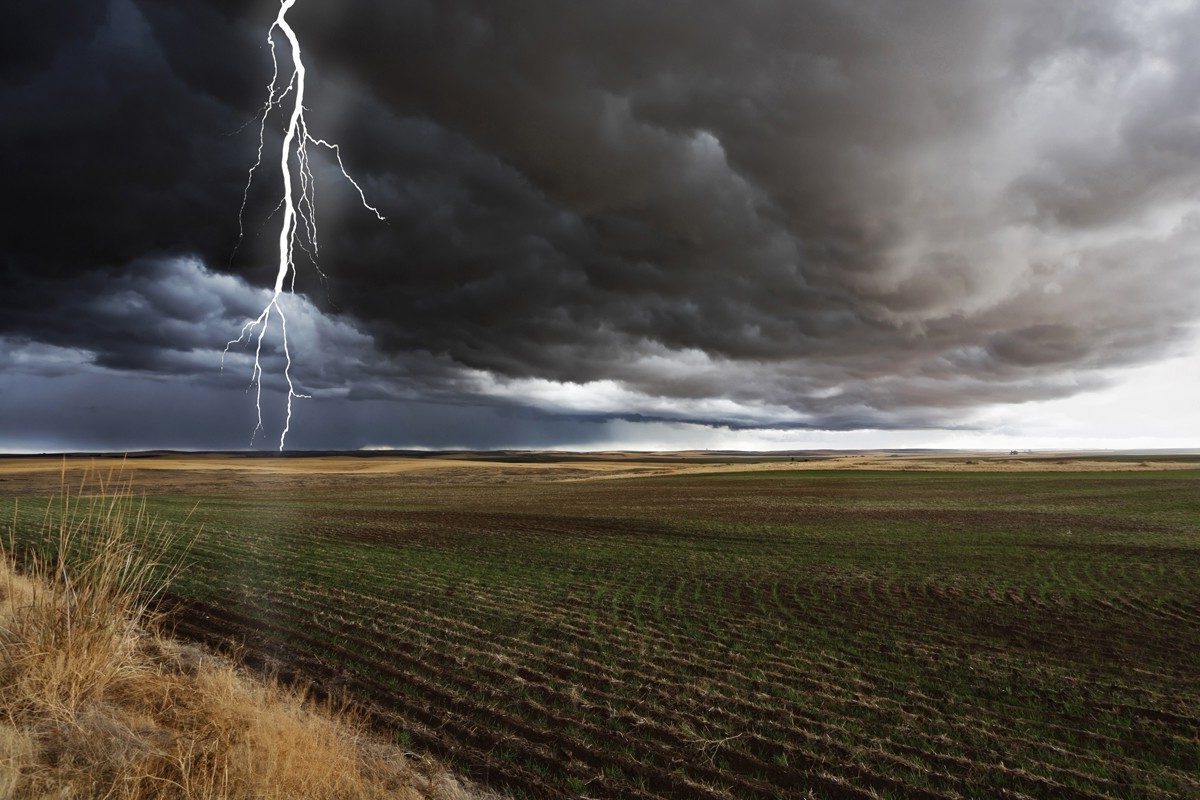
Meteorology, the study of the atmosphere and weather phenomena, offers a glimpse into the dynamic forces shaping our world. From the gentle fall of rain to the fury of hurricanes, weather impacts our daily lives in countless ways. Did you know that one billion tons of water fall from the sky every minute? Or that severe weather events like tornadoes and hurricanes cause billions in damage annually? These natural occurrences influence everything from migration patterns to vegetation types. In this article, we'll explore 40 intriguing facts about meteorological events, shedding light on the wonders and challenges posed by our planet's ever-changing weather.
Key Takeaways:
- Water and weather are powerful forces, with one billion tons of water falling every minute. Severe weather causes billions in damage and influences migration patterns, impacting both humans and wildlife.
- Earth's rotation and climate shape our weather, from the Coriolis effect to vegetation types. Unique weather phenomena, like Jupiter's hurricane and river Thames freezing, showcase nature's unpredictability.
The Astonishing Power of Water and Weather
Water and weather are intricately linked, creating some of the most awe-inspiring and destructive phenomena on Earth. Let's dive into some mind-blowing facts about these natural forces.
-
One Billion Tons of Water Falls Every Minute
Clouds act as floating reservoirs, redistributing water as rain, sleet, and snow. An astonishing one billion tons of water falls every minute, showcasing the immense power of our atmosphere. -
Severe Weather Causes Billions in Damage
Severe weather events like tornadoes, hurricanes, and floods displace people and cost billions annually. Hurricanes alone cost an estimated $28 billion per year in the United States. -
Weather Influences Migration Patterns
Climate changes significantly influence migration. For example, polar bears face extinction due to global warming, as melting sea ice reduces their hunting time.
Forces Shaping Our Weather
Various forces, from Earth's rotation to atmospheric pressure, shape our weather patterns. These forces create the dynamic and ever-changing climate we experience daily.
-
The Coriolis Effect Shapes Weather Patterns
The Coriolis effect, caused by Earth's rotation, deflects air masses and ocean currents. This deflection impacts air circulation, weather patterns, and ocean currents, making air veer right in the northern hemisphere and left in the southern hemisphere. -
Climate Influences Vegetation Types
Climate determines vegetation types. Desert plants are thick and prickly, retaining water in dry conditions. Deciduous trees thrive in moist conditions, shedding leaves in winter to protect from cold. -
Jupiter’s Everlasting Hurricane is Larger Than Earth
Jupiter’s rapid rotation creates extreme weather, including a hurricane observed for over 340 years. This cyclone is so massive it appears as a red spot on Jupiter’s surface.
Extreme Weather Events
Extreme weather events can be both fascinating and terrifying. From record-breaking temperatures to destructive storms, these events leave a lasting impact.
-
Earth is Closest to the Sun in January
Earth is closest to the Sun in January, leading to longer days and warmer temperatures in the Northern Hemisphere. This proximity also affects global weather patterns, resulting in more intense storms. -
Tornadoes are Rare but Destructive
Tornadoes are rare but incredibly destructive. Only a handful of F5 or EF5 tornadoes have been documented outside the United States since 1900, often referred to as "monsters" of the weather world. -
The Most Anomalous Weather Event in U.S. History
In 2012, record warmth persisted for an extended period. International Falls broke or tied its daily record maximum temperatures for 10 consecutive days from March 13 to 22. Chicago saw daily high records broken or tied for nine consecutive days during the same period.
Unpredictable and Unusual Weather Phenomena
Weather can be unpredictable and unusual, sometimes creating phenomena that seem almost otherworldly.
-
Extreme Rainfall Events
In October 1974, an extreme rainfall event in Pennsylvania caused rain to come down in streams and ropes, leading to widespread flooding and displacement. -
Sandstorms Can Swallow Entire Cities
Sandstorms, often referred to as black blizzards, can swallow entire cities. These storms form when dirt mixed with wind creates massive dust clouds, blocking sunlight and reducing visibility. -
Mudslides Can Carry Rocks and Buildings
Mudslides, often caused by heavy rainfall, can carry rocks, trees, vehicles, and even entire buildings, resulting in significant loss of life and property.
Record-Breaking Weather Events
Some weather events break records, showcasing the extremes our planet can reach.
-
Coldest Temperature Ever Recorded
The coldest temperature ever officially recorded was -89.2°C in Antarctica, highlighting the vast temperature variations across our planet. -
Black Ice Can Make Pavements Slippery
Black ice, a transparent coating of ice on surfaces, can make pavements extremely slippery, posing a significant danger during winter months. -
Frogs Get Noisier Before Rain
Some frogs get noisier just before it rains, believed to be a natural warning system signaling impending rain and potential flooding.
Historical Weather Events
Historical weather events have left a lasting impact, shaping our understanding of meteorology and its effects on human life.
-
Sandstorm Buried Hundreds of Soldiers
In 525 BC, a sandstorm buried hundreds of soldiers in an Egyptian desert, highlighting the destructive power of sandstorms. -
Waterspouts Can Make Sea Creatures Rain Down
Waterspouts, rotating columns of air over water, can make sea creatures rain down from the sky, showcasing the unpredictable nature of weather phenomena. -
Hailstones Bigger Than Cricket Balls
In 1995, hailstones bigger than cricket balls fell in Texas, causing catastrophic damage and underscoring the potential for severe weather.
Unusual and Rare Weather Events
Some weather events are so unusual and rare that they capture our imagination and remind us of nature's unpredictability.
-
River Thames Froze Solid in 1684
In 1684, the River Thames froze solid for two months, a rare occurrence that highlighted the variability of Earth's climate. -
Cats and Dogs Sense Tornadoes
Cats and dogs have been known to sense approaching tornadoes, attributed to their keen sense of smell and hearing, detecting changes in atmospheric pressure and sound waves. -
Fire Tornadoes Can Form During Wildfires
Fire tornadoes, or firenadoes, can form during intense wildfires, generating winds on par with EF3 tornadoes, posing significant risks to firefighters and communities.
Devastating Hurricanes
Hurricanes are among the most destructive weather events, causing widespread damage and loss of life.
-
Hurricane Katrina’s Devastating Impact
Hurricane Katrina, which struck the Gulf Coast in 2005, caused widespread flooding, displacement, and loss of life, with estimated damages exceeding $100 billion. -
Hurricane Ivan’s Destruction
Hurricane Ivan, which hit the Gulf Coast in 2004, brought strong winds and heavy rainfall, resulting in extensive damage to infrastructure and property. -
Hurricane Frederic’s Fury
Hurricane Frederic, which struck the Gulf Coast in 1979, was a Category 4 hurricane that brought intense winds and heavy rainfall, causing widespread destruction.
The Impact of Tropical Storms
Tropical storms, while less intense than hurricanes, can still have significant impacts on local communities.
-
Hurricane Eloise’s Impact
Hurricane Eloise, which hit the Gulf Coast in 1975, was a Category 3 hurricane that brought strong winds and heavy rainfall, causing significant damage and flooding. -
Hurricane Camille’s Catastrophe
Hurricane Camille, which struck the Gulf Coast in 1969, was one of the most destructive hurricanes in U.S. history, bringing catastrophic winds and flooding. -
Hurricane Flossy’s Fury
Hurricane Flossy, which hit the Gulf Coast in 1956, was a Category 3 hurricane that brought strong winds and heavy rainfall, causing significant damage.
Tornadoes and Their Impact
Tornadoes are among the most feared weather events due to their unpredictability and destructive power.
-
Hurricane Florence’s Destruction
Hurricane Florence, which struck the Gulf Coast in 1953, was a Category 4 hurricane that brought intense winds and heavy rainfall, causing widespread destruction. -
Hurricane Baker’s Impact
Hurricane Baker, which hit the Gulf Coast in 1950, was a Category 3 hurricane that brought strong winds and heavy rainfall, causing significant damage. -
Tropical Storms and Their Impacts
Tropical storms, such as Tropical Storm Claudette in 2021, often bring heavy rainfall and strong winds, leading to flooding and power outages.
Tornado Outbreaks
Tornado outbreaks can be particularly devastating, with multiple tornadoes touching down in a short period.
-
Tornado Outbreaks in the United States
Tornado outbreaks, such as the one in March 2021, often result in widespread destruction and loss of life. -
Hurricane Ida’s Tornadoes
Hurricane Ida, which struck the Gulf Coast in 2021, produced several tornadoes that caused significant damage and loss of life.
The Role of the Troposphere
The troposphere, the lowest layer of Earth's atmosphere, is where all weather occurs, influencing everything from temperature to precipitation.
-
Severe Weather Events in the Southern United States
The Southern United States is particularly prone to severe weather events, including tornadoes, hurricanes, and flooding, often causing widespread damage and displacement. -
Weather Patterns in the Troposphere
All weather occurs in the troposphere, the lowest layer of Earth's atmosphere, where weather patterns form and evolve.
Global Rainfall Distribution
Rainfall distribution varies significantly around the globe, influenced by factors like proximity to the equator and air masses.
- Rainfall Distribution Around the Globe
Equatorial regions receive the most rainfall due to high temperatures and humidity, while polar regions receive very little due to dry air masses.
The Impact of Climate Change
Climate change is altering global weather patterns, leading to more frequent and severe weather events.
- Climate Change and Its Impacts
Rising temperatures lead to more frequent and severe weather events, affecting migration patterns and ecosystems worldwide.
The Coriolis Effect and Vegetation Adaptation
The Coriolis effect and vegetation adaptation to climate conditions play crucial roles in shaping our environment.
-
The Role of the Coriolis Effect in Weather Patterns
The Coriolis effect influences the formation of high and low-pressure systems, driving wind patterns and precipitation. -
Vegetation Adaptation to Climate
Vegetation types are adapted to specific climate conditions, with desert plants retaining water and deciduous trees shedding leaves to conserve water.
Unique Weather Systems on Other Planets
Weather systems on other planets, like Jupiter, offer a fascinating glimpse into the extremes of our universe.
- Jupiter’s Unique Weather System
Jupiter’s rapid rotation and massive size create extreme winds and storm systems, including an everlasting hurricane.
Earth’s Proximity to the Sun
Earth’s proximity to the Sun affects global weather patterns, influencing everything from temperature records to storm systems.
- Earth’s Proximity to the Sun and Its Impacts
In January, increased solar radiation leads to longer days and warmer temperatures in the Northern Hemisphere, affecting global weather patterns.
The Dynamic World of Weather
Meteorological events shape our daily lives in ways we often take for granted. From the Coriolis effect influencing global weather patterns to extreme rainfall events causing floods, the atmosphere is a complex and ever-changing system. Hurricanes like Katrina and Camille have left indelible marks on history, while tornadoes and fire tornadoes showcase nature's raw power. Even the coldest temperature recorded in Antarctica and the River Thames freezing solid remind us of the planet's extremes. Understanding these phenomena helps us prepare for and mitigate their impacts. As climate change continues to alter weather patterns, staying informed becomes even more crucial. By appreciating the intricacies of meteorology, we gain a deeper respect for the forces at play and the importance of protecting our environment. So, next time you see a storm brewing, you'll know there's a lot more going on than meets the eye.
Frequently Asked Questions
Was this page helpful?
Our commitment to delivering trustworthy and engaging content is at the heart of what we do. Each fact on our site is contributed by real users like you, bringing a wealth of diverse insights and information. To ensure the highest standards of accuracy and reliability, our dedicated editors meticulously review each submission. This process guarantees that the facts we share are not only fascinating but also credible. Trust in our commitment to quality and authenticity as you explore and learn with us.


